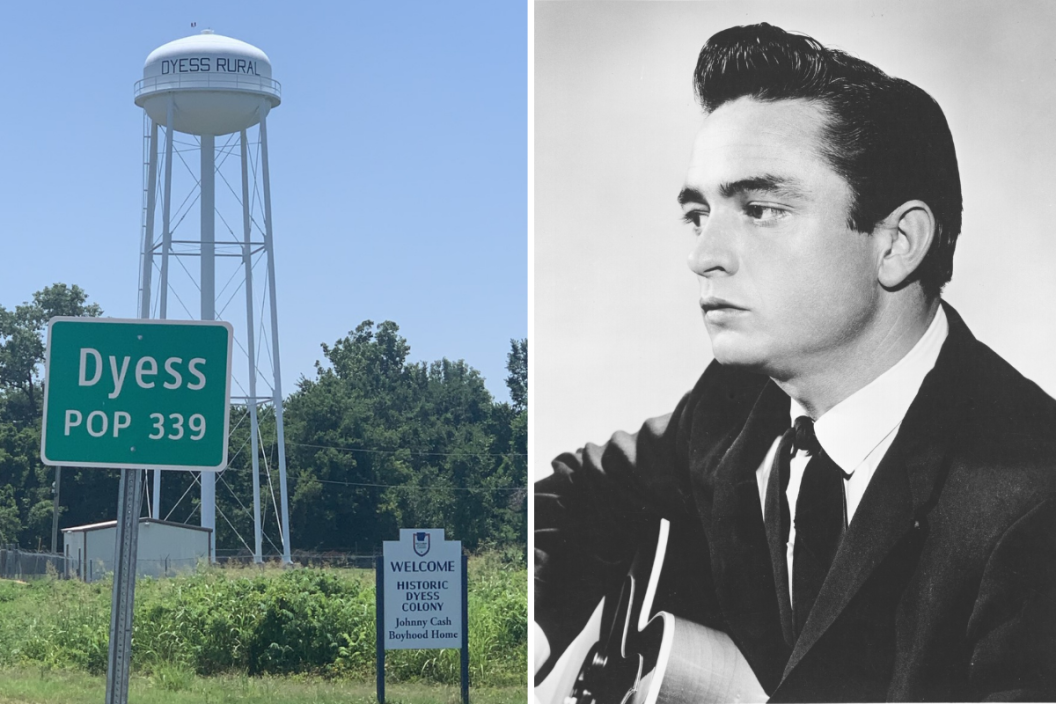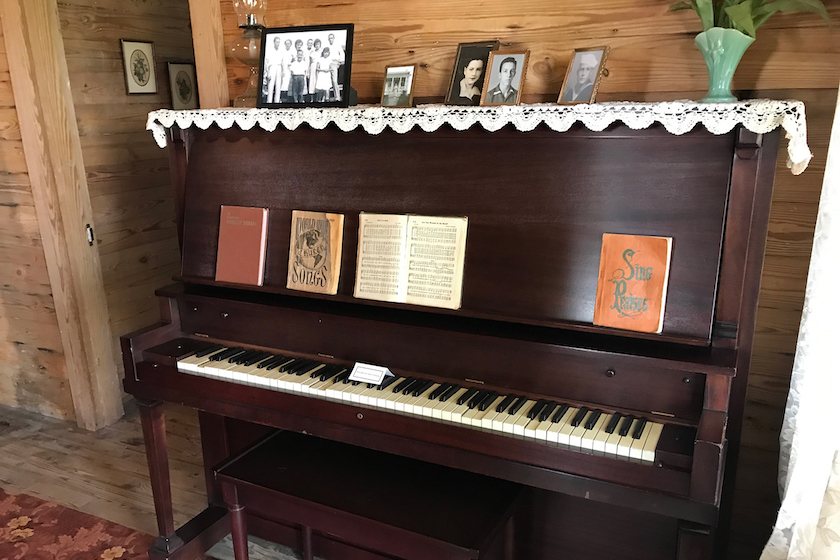What's promoted as the Johnny Cash Boyhood Home in Dyess (pronounced Dice), Ark. amounts to more than the well-preserved house where the future country star lived from age 3 to his high school graduation in 1950. Beyond that, visitors get fully immersed in history —of regional music as well as the Great Depression and President Franklin D. Roosevelt's New Deal— across the entire Arkansas State University (ASU) Heritage Site.
The historic Dyess colony in Mississippi County bears the name of Arkansas' first Works Progress Administration (WPA) head, W.R. Dyess. What the Society of Architectural Historians' Archipedia describes as "a sociological experiment in rural rehabilitation" was established in 1934 as the WPA's Colonization Project No. 1. It offered 500 of the region's hardest-working and most financially-strapped sharecropping and tenant farming families 20 to 40 acres, a mule and the previously unimaginable hope of becoming landowners.
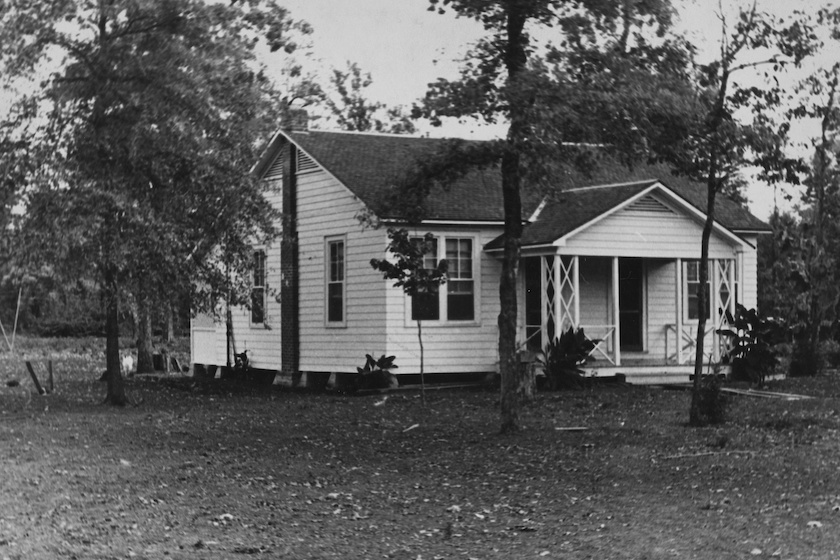
Black and white photograph of a house in Dyess Colony, one of the most famous "resettlement colonies" for impoverished farmers during the Great Depression, by Ben Shahn, a Lithuanina born American artist known for his work for the Farm Security Administration documenting the effects of the Great Depression, Mississippi County, Arkansas, 1935. From the New York Public Library. (Photo by Smith Collection/Gado/Getty Images).
Ray and Carrie Cash left Kingsland, Ark. in March 1935 for the Dyess resettlement with their son Johnny (then known as J.R.) and his four older siblings. Three younger Cash children —Reba and future country singers Joanne and Tommy— were born in Dyess, while older brother Jack died there following complications from a table saw injury.
"Fortunately for us, the Cash family was one of those [selected to live in Dyess after an application process] because if it wasn't for the Cash family, would this place be here? Probably not," Penny Toombs, director of Dyess Colony: Johnny Cash Boyhood Home, told Wide Open Country in July 2022. "The Cash family allows us that window or that avenue to get that part of history out to folks."
In 2011, ASU purchased the Cash family's former home, which at the time was in ill repair. Considering the history of floods (as referenced in Cash's "Five Feet High and Rising") and tornadoes in the area, it's amazing that enough of the house survived to allow for the renovations that followed.
"It really is a miracle that it was there," Toombs added. "Of course, it was on the list of endangered historical sites in Arkansas, so it wasn't in great condition, but it was there."
A little over three years after ASU's ambitious project began, the home opened to the public as a painstakingly accurate depiction of the scarce modern conveniences the family could afford.
"Joanne and Tommy went to great lengths to get it as close to the original as possible without everything originally from the house," Toombs said. "The piano is from the house. Joanne said where it was placed. The purple flowers in the flower boxes under the window at the front of the house, she remembered purple flowers there. The radio and the sewing machine are identical to what the Cash family had. Even though they are not the original, they were the same year and model. What they would do is send pictures to Joanne and she'd look and say, 'That's close. That's not. Oh yeah, that's spot on.' It was a real effort to find pieces that were close enough. For instance, the couch came from California."
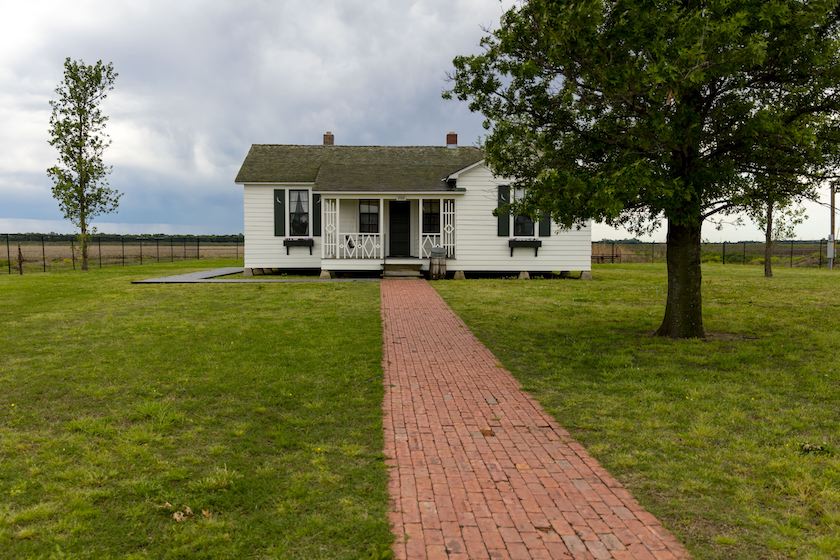
Visions of America/Education Images/Universal Images Group via Getty Images
Residents took pride in local history already, especially when scenes for Walk the Line got filmed in downtown Dyess. Historians knew the town's importance, as well, based on a National Register of Historic Places listing which dates back to 1976. Yet it took the resources of ASU and the sway of high-profile benefit concert performers —from Cash's daughter Rosanne to George Jones, Kris Kristofferson and Reba McEntire— to properly restore and maintain the Cash property plus the Administration Building, which doubles as a museum, and the adjacent movie theatre, which serves as a gift shop and exhibit space.
The Administration Building houses artifacts that tell the story of Dyess and its most notable former residents, from Cash and his relatives to country radio and television personality Gene Williams. In addition to capturing the struggles and triumphs of local farming families, its permanent exhibit encapsulate Cash's childhood dreams of something greater for himself with one hand-drawn piece of art.
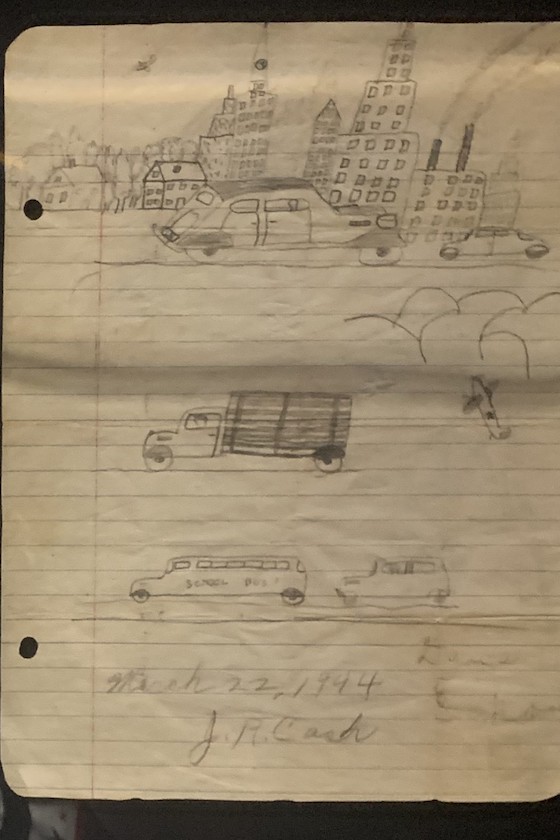
Bobby Moore
"We had a group of kids in, and I was saying, 'Look at this. Even in sixth grade, he was thinking about big dreams, skyscrapers and big cars'," Toombs explained. "It really amazes me that he had that type of imagination from being from this area. This area is all he knew, so he didn't have a television to watch to where there were all of these things he would see. He was going by what he read or his imagination on that."
One challenge for Toombs and others involved with Dyess is that the former swampland isn't close to anything except such equally tiny towns as Tyronza, home of the Southern Tenant Farmers Museum. Memphis is over 40 miles away and it takes a half hour to drive to the Mississippi County seat, Osceola. There's not even a place in Dyess to stop for gas or grab a hamburger.
"We really are out here in the middle of nowhere, which makes it special," Toombs said. "That's the way things were during that time. It's real important to get the word out so folks even know it's here."
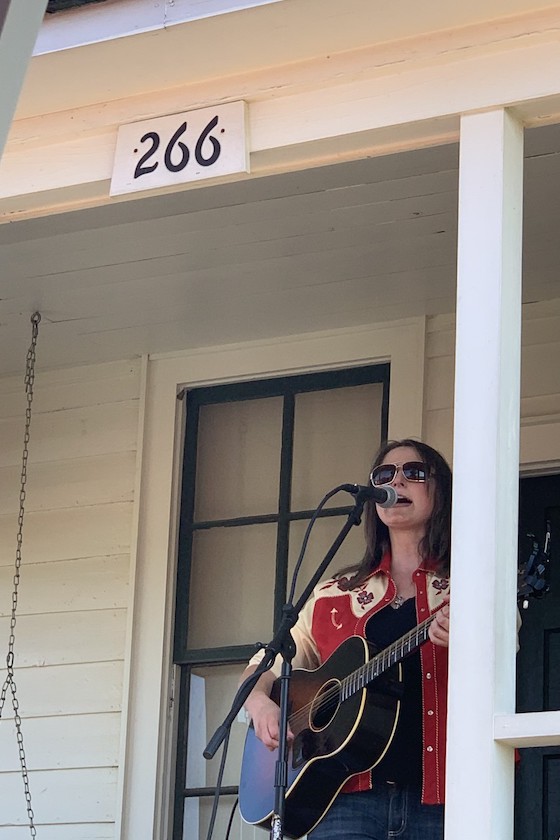
Addie Moore
A summer concert series began in June 2022 and uses the Cash family porch as its stage. Like Cash, the inaugural performer, Conway native Erin Enderlin, plotted a creative path while growing up in rural Arkansas before moving to Tennessee and becoming a prolific songwriter.
"Standing on Johnny Cash's front porch, a lot of thoughts went through my head," Enderlin said in July 2022. "Two of the strongest: the power of music and the love of family. I stood on my own front porch years ago and dreamed of making music for a living, so I don't take a single second of it for granted."
In all, Cash's cultural importance in and beyond Arkansas draws attention to a historic site that tells a much broader story about the resilience of the Southerners that survived the Great Depression, with or without big city dreams or what would become a famous surname.
This story was previously published on July 8, 2022.
